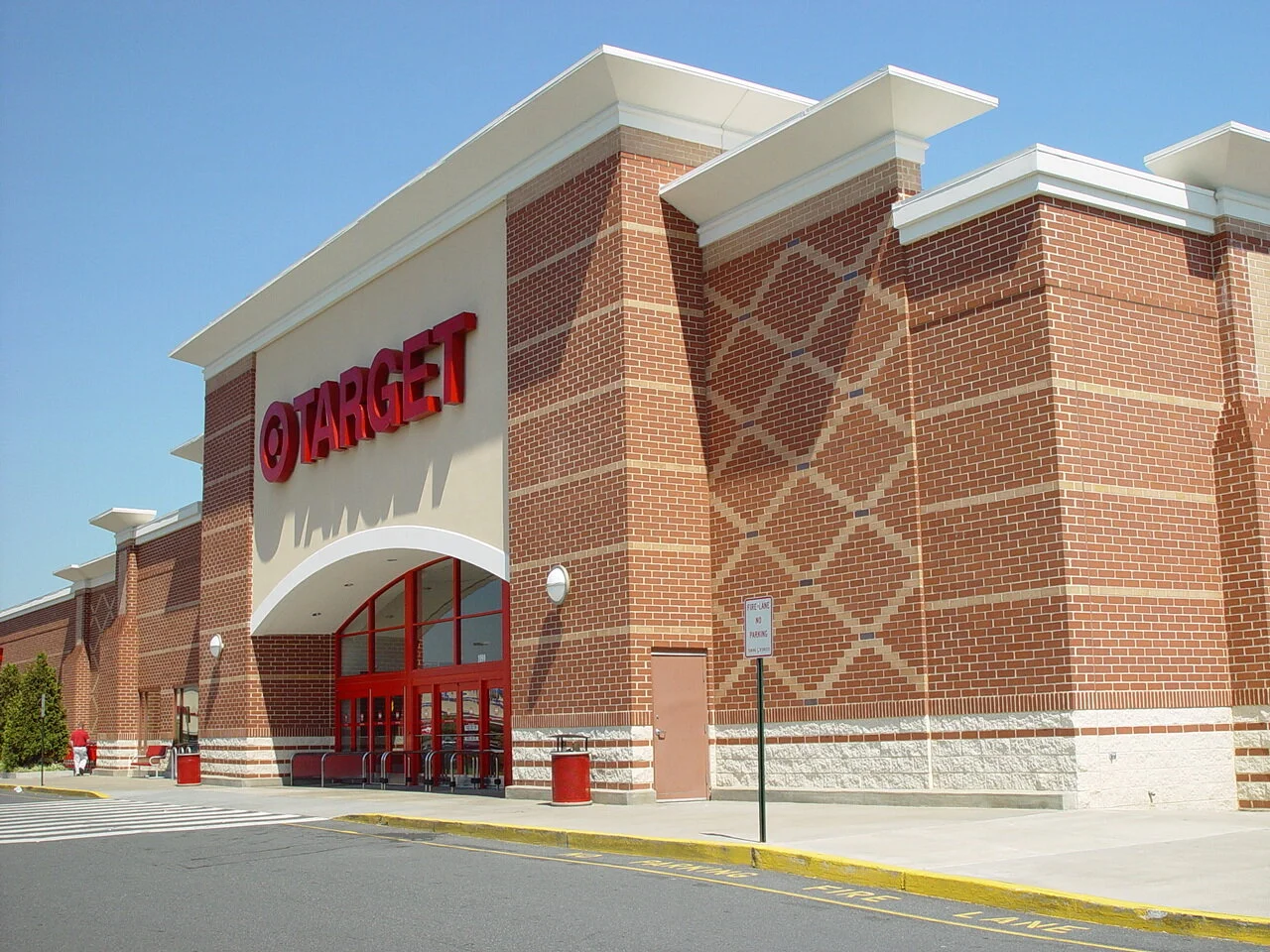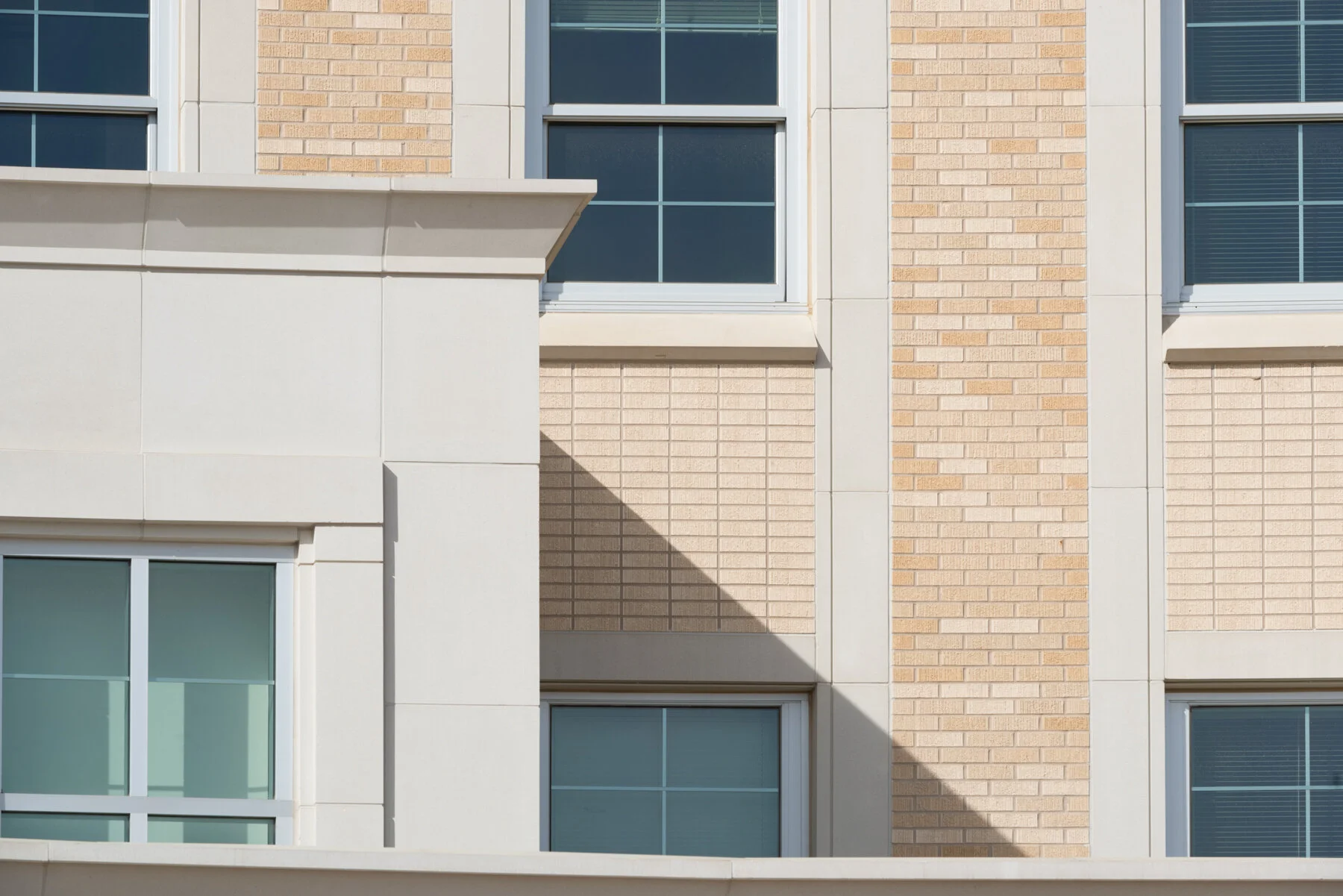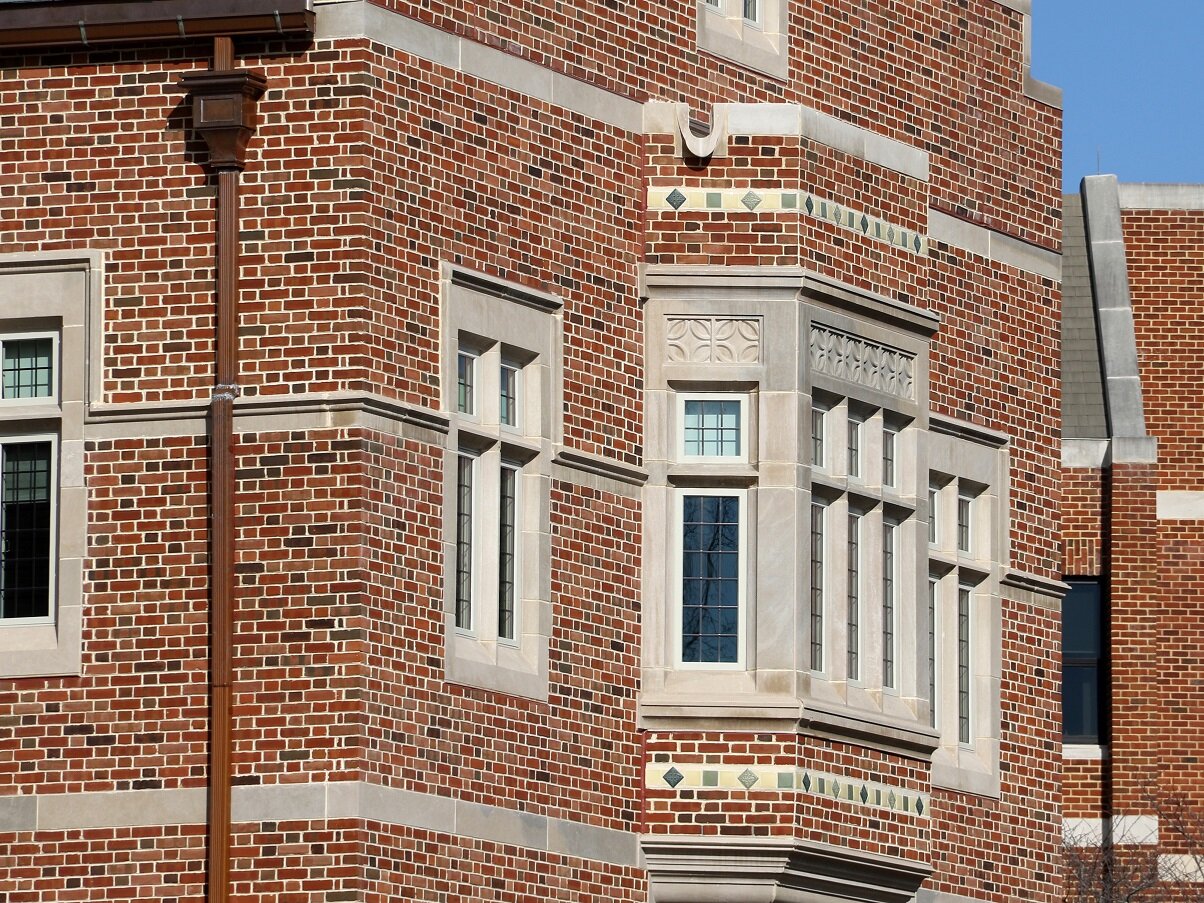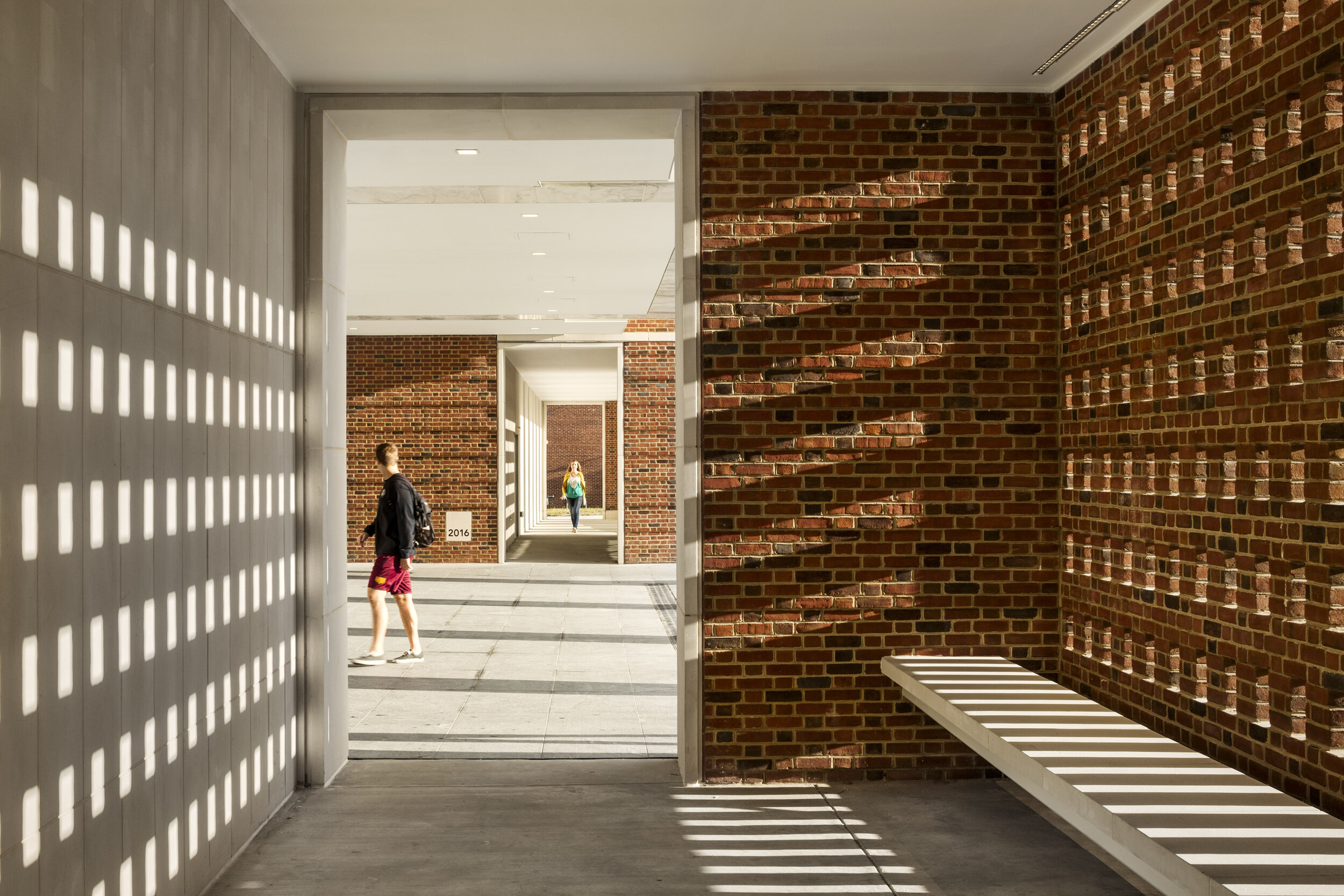Bonds and patterns
/Because brick masonry is a combination of many small units installed with mortar in-between, brick offers an incredible degree of design flexibility for architects. Each individual unit can be placed in any of several orientations, and multiple units can be organized together into patterns of a particular orientation. This produces the bond pattern.
Throughout the many centuries that humans have been stacking brick and mortar together to create structures, some bond patterns and course types emerged so frequently that they were given names: running bond, half bond, Flemish bond, English bond, common bond, etc.
Historically, the term “bond” referred to more than just the cosmetic appearance made by the pattern of brick in the wall. Regularly orienting some individual units so their ends were exposed (called “headers”) rather than their widths (“stretchers”) allowed the long dimension of the brick to extend backward into the wall, tying into the interior wythes (layers) of brick, structurally bonding the wythes together. The result, though serving a practical purpose, also created a distinct aesthetic pattern. English bond places these headers in continuous courses (rows) with uninterrupted courses of stretchers above and below. Flemish bond alternates headers and stretchers at regular intervals in the same course.
Today, most brick construction is single-wythe, so integrating brick to make the structural bond is no longer necessary. And yet, many historic bond patterns find their way into new structures simply because of their beauty. In the gallery below you’ll find that a given bond pattern does not necessarily indicate a particular style or hearken to a particular era. You’ll also notice that creative designers have combined tried and true bond patterns with brick’s myriad colors, shapes, and textures to achieve something entirely new — a feat that is only possible with brick.
Coming soon…contemporary bonds and patterns that defy tradition. Stay tuned! Until then, check out the Brick Industry Association’s Technical Note, Bonds and Patterns in Brickwork.



























